| This was the year where there was a much needed reckoning with the huge emergence of streaming over the past few years as the artists actually responsible for the content went on strike to demand considerations that were long overdue by the executives in charge of the film industry. While it was a crippling strike for so long and ended up pushing a lot of planned 2023 films into next year, it was incredibly necessary and it was beautiful to see so many artists standing together to demand better pay and consideration and transparency in an industry continuing to change in quantum leaps. This was also the year of emerging AI that could create art on its own, a truly scary prospect for so many reasons not least of which is film art not created by actual human beings. And when I think back on 2023, I'm so thankful for so many actual human beings who made movies the way they should be made. And just as the Top Gun sequel saved the boxoffice the year before in bringing back the huge types of audiences that the boxoffice lost during the COVID years, this was the year of the "Barbenheimer" phenomenon. With two uniquely original films that couldn't be more different from one another, they celebrated together instead of competing, and audiences came out in droves to see both films. For me, what it represented more than anything a celebration of ORIGINAL films being made at the largest of budgets, something we sadly do not get enough of in today's film industry. I long for the era of the 1970s when talented directors with risky and bold visions were actually funded by studios willing to take risks, instead of today's Hollywood where most major funding goes to "safe" superhero films and remakes. There are SO few filmmakers that get to make ORIGINAL films on this scale, and to see two of them celebrated like that was SO refreshing! With those two films and the few others that presented unique original visions, I hope it provides a spark for more funding to go to original and riskier film visions because there are SO many out there with SO many talented filmmakers that deserve a chance. And it was those particular films that I will remember as the truly best films of 2023. |

1. OPPENHEIMER
Zero Dark Thirty. Schindler's List. United 93. The Social Network. Nixon. JFK. Born on the Fourth of July. What do these films have in common? One, they were also groundbreaking films made by directors, actors, and film teams working at the absolute top of their game. They were also all incredibly engaging and important works of art that brought history to life in ways that only cinema has the power to do. And lastly, they were easily my choice for the greatest film of their respective years. Now you can add another true masterpiece to that list with Christopher Nolan's monumental masterpiece bringing the story of atomic bomb creator J. Robert Oppenheimer to life in a truly moving and perfect film.
Nolan has long been one of our greatest film artists, and I admire the hell out of him for insisting on practical effects as much as possible for a realism that audiences today don't appreciate much after being bombarded with so much CGI. His films are remarkable epics that demand the highest quality work from everyone involved, and we as the audience benefit so much from that demand for perfection.
With "Oppenheimer", Nolan has gifted us a truly unique, unflinching, nuanced portrait of the enigmatic, complicated man who spearheaded the Manhattan Project and subsequently ran afoul of the "red-baiting" politics of the McCarthy era. Technically it's a biopic, but it doesn't play like one. It's more like Nolan carefully selected various threads running through Oppenheimer's life and wove them into a richly textured tapestry that somehow transcends those raw materials. The result is pure visual poetry.
There are two basic storylines, and the film shifts back and forth between them; Nolan has never been one to strictly adhere to a chronological timeline. "Fission" is shot in color and follows Oppenheimer (Cillian Murphy) through his early years as a graduate student and college professor; his leadership of the Manhattan Project culminating with the Trinity Test; his simultaneous triumph and torment in the wake of Hiroshima and Nagasaki; and the eventual loss of his security clearance thanks in large part to early Communist connections and his outspoken opposition to developing a hydrogen bomb.
"Fusion" is shot in IMAX black-and-white analog photography and follows the 1959 Senate confirmation hearing of Lewis Strauss (Robert Downey Jr.), former chair of the Atomic Energy Commission who-as the film gradually reveals-played a critical role in stripping away Oppenheimer's security clearance five years earlier, angering many in the physics community. The black mark against Oppenheimer's name wasn't fully cleared until December 2022.
As an ensemble, this cast doesn't feature one weak link. Emily Blunt shines in a relatively small role as Kitty Oppenheimer, who suffered from depression and had a volatile relationship with her philandering husband, but remained fiercely loyal to him. But the film ultimately belongs to Murphy and Downey Jr., both of whom give Oscar-worthy performances. Their mutual antagonism is arguably the heart of the film.
Nolan brings an impressive degree of historical accuracy to the film without resorting to a simple recitation of facts, seeding it with tons of throwaway details and characters as ornamental flourishes.
"Oppenheimer" is anchored by what might be the best screenplay of Nolan's career and possiblu the best screenplay of the year so far. The movie is three hours long and dialogue heavy yet there's never a dull moment. You won't find a wasted scene or a throwaway line. Nolan is always going somewhere and strategically moving his story and the characters who inhabit it forward. It's a textbook case of a movie earning every second of its running time.
Simply put, this is a monumental cinematic achievement, the type of which doesn't come along that often. The phenomenal performances top to bottom. The incredible visuals from director of photography Hoyte van Hoytema. Ludwig Goransson's INCREDIBLE score which ranks as one of the greatest film scores OF ALL TIME. Nolan's impeccable precision and control. It's all seamlessly bound together in a movie of both historical importance and present day urgency. Yes, "Oppenheimer" is a compelling look at a fascinating historical figure. It also holds a mirror to our world, warning of humanity's propensity to focus so much on the now that we rarely consider the future. That truth is captured most in the film's sobering and powerful final scene - a movie moment that will stay etched in my mind forever.
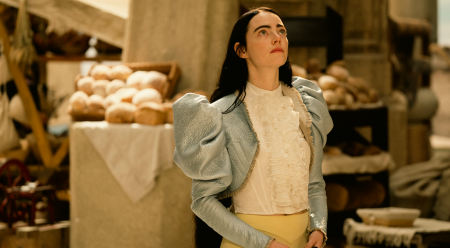
2. POOR THINGS
Yorgos Lanthimos's latest film, his second collaboration with star Emma Stone, is a movie that is truly beyond any kind of description or categorization. To describe "Poor Things", which is adapted by Tony McNamara from the 1992 novel by Alasdair Gray, as creatively uninhibited hardly does justice to the wild, wild ride that this explosively inventive picture takes us on. Driven by a courageous and physically committed performance from Stone, the film follows her journey as Bella Baxter, at the start of the film a barely verbal blank slate, who embarks on a voyage of discovery to become the ultimate self-made woman.
Like much in "Poor Things", the time period is impossible to pin down exactly. The story of Bella unfolds in a parallel past, a gothic, steampunk-infused Victoriana, a world that is distorted (literally - Lanthimos's enthusiastic use of fisheye lenses warps the contents of the frame) by the patriarchal power disparities in society. Without giving away the specifics, the picture is a subversive spin on Mary Shelley's "Frankenstein", with the role of Bella's creator and guardian taken by unorthodox genius Dr Godwin Baxter (Willem Dafoe). Called "God" by Bella, Godwin bears grotesque scars on his face and body resulting from his childhood experience as the subject of his father's deranged scientific curiosity - an experience that failed to extinguish his own quest for empirical facts. When Godwin recruits eager student Max McCandles (Ramy Youssef) to keep a record of Bella's accelerated progress, her grasp of language expands exponentially.
Bella's journey is supported by a wonderfully eccentric film score that is truly one of the year's best scores, and is also a character itself. Bella's hunger for knowledge and experience is too huge to be contained within the walls of Godwin's mansion. She grasps the opportunity offered by lawyer and man-about-town Duncan Wedderburn (played by a truly marvelous Mark Ruffalo) and ventures forth from London, first to Lisbon, then by steamship to Alexandria and finally to a Parisian brothel. As Bella's horizons broaden, so the look of the film alters to encompass her experiences. The chapter set predominantly in Godwin's home is black and white, but once Bella ventures forth, the film shifts into color. But not just any color - there's an uncanny, hyperreal quality to the palette that makes each frame look like a hand-tinted piece of Victorian postcard erotica.
It's an incredible combination, this continuing collaboration between Lanthimos and Stone, a working relationship that started with "The Favourite" and will continue with another feature film project, titled "Kinds of Kindness". Together they unleash in each other an extra level of uninhibited artistic daring that must be rooted in an uncommon degree of mutual trust.
Nowhere is this more evident than in the physicality of Stone's remarkable performance. And I'm not just talking about the nudity and the sex scenes, although since Bella approaches her body and her sexuality with the same delight and sense of adventure that she brings to the wider world, there is rather a lot of both. But Stone's virtuoso use of her body - the way it inhabits space, the way she gradually masters her gangling, string-like limbs, the wonderful open play of emotions in her face - is one of the most crucial elements in our experience of Bella's journey. It's a performance of staggering magnitude that is not only the best performance of 2023 but of many recent years.
That journey is supported by a deliciously eccentric score by Jerskin Fendrix. An uneasy, detuned four-note motif played on flayed violin strings opens the film and returns in various incarnations throughout. The gradual build of intricacy and sophistication in the music brilliantly mirrors Bella's intellectual growth.
Equally important is the work of the film's various design teams and Robbie Ryan's ever-curious camera. Bella's appetite for novelty is reflected in film-making that evokes a similar sense of wonder and discovery in the audience. From the quirky flamboyance of the costumes to the off-kilter production design, "Poor Things" is an endlessly fascinating carnival of oddness.
In a word, it is truly a one-of-a-kind original, something we truly do not get enough of.

3. PAST LIVES
"Past Lives" opens with a shot of three people sitting at a bar in New York - a man and a woman, both of Asian descent, chat with each other, while another man, who's white, looks silently on. We hear some people watchers offscreen casually wonder how these three are connected - are the Asian duo a couple, or are they siblings? Or is the white guy the Asian woman's boyfriend?
It's a beautiful entry point into a story that's rooted in the writer-director Celine Song's personal experience. By the end of this exquisitely thoughtful and moving film, we've come to know and care deeply about all three of her characters, who are far more complicated than a quick judgment from afar can convey.
After that prologue, the movie flashes back 24 years to when the two Asian leads were young classmates in Seoul, South Korea. The girl is named Na Young, and the boy is named Hae Sung. They're close friends, practically childhood sweethearts, but everything is about to change: Na Young and her family are immigrating to Canada, and she and a quietly heartbroken Hae Sung lose contact.
Twelve years pass. Na Young - now going by Nora, and played by Greta Lee - is a 24-year-old aspiring playwright in Toronto. Hae Sung, played by Teo Yoo, is an engineering student in Seoul. They reconnect by chance on Facebook and are soon spending hours video-chatting on Skype: Even though they haven't talked in more than a decade, the old bond is still there, maybe stronger than ever. But realizing that her renewed friendship with Hae Sung is distracting her from her life in Toronto, Nora decides they should cool it for a while.
It's be another 12 years before they talk again, and by the time they do, Nora is living in New York and married to a fellow writer named Arthur - and yes, he's the white guy from the opening scene, played by John Magaro. One day Hae Sung tells Nora that he's coming to New York for a visit and would like to see her, sparking a conversation in which Arthur says, "the guy flew 13 hours to be here. I'm not going to tell you that you can't see him or something."
"Past Lives" is both achingly romantic and earnestly philosophical. More than once Nora and Hae Sung use the Korean term inyun, a Buddhist-derived concept which suggests that every meeting between two souls is the product of countless interactions or near-interactions in their past lives. They muse about what might have happened if Nora - if Na Young - had stayed in Korea. Maybe she and Hae Sung would have gotten married. Or maybe not; maybe it's only because she left that their feelings for each other are so powerful now.
All 3 of these performances are absolutely tremendous. You feel so much for every single one of them, and you never take a side for how these characters feel.
In the end, what makes this film so moving is the grace that all three of these characters extend to one another in an awkward situation with no heroes or villains. You've seen the more conventional romantic-triangle version of this story, but Song isn't after melodrama; she wants us to see what's keeping Nora and Hae Sung apart, but also what's binding them, possibly for eternity.
This film, which compresses two decades into barely two hours, is the most affecting love story I've seen in so long. It ends with a curiously hopeful image, focused less on the characters' past regrets and more on the infinite possibilities still ahead.
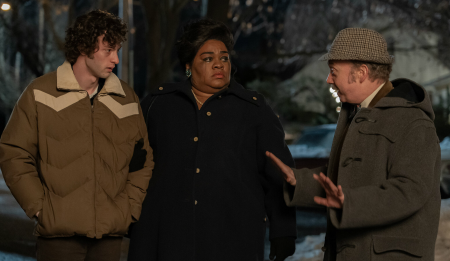
4. THE HOLDOVERS
Another director who I have consistently loved is Alexander Payne. His ability to project ordinary characters and ordinary situations written with so much beautiful dialogue continues to remain extraordinary. And that absolutely describes this new film by Payne, which I think is his best film since "Sideways."
The story of a man, woman, and student forced to spend Christmas together could have been soaked in syrup, a pat family narrative where everyone easily sinks into their conveniently marked role, leaving the holidays as a dysfunctional but loving new unit.
And while there are lessons learned and bridges built, there's also a refusal to succumb to the sweetness this setup suggests, a clever weave away from expected formula, trope-adjacent characters elevated to real, living, difficult people. In a recent interview with Vanity Fair, Payne balked at those using the word "cozy" to describe it, saying that the word "nauseates" him and instead telling IndieWire that part of the inspiration for the festive setting is that a "very large percentage of suicides happen" between Christmas and New Years.
His three characters don't openly entertain the idea of killing themselves (the film is about grim topics but never itself grim) - they're all just at the mercy of an emotional struggle and Payne, along with screenwriter David Hemingson, understands that this particular time of year makes that struggle seem all the more impossible to get through. Roaming around an otherwise empty prep school, as if the rest of the world had forgotten about them, a teacher and a student both dealing with depression and a cook coping with the death of her son must find a way through to the other side. If they can just make it to the new year, then maybe they might actually make it.
"The Holdovers" is elegant and cinematic while also remaining rooted in the messy and uncomfortable reality of human behavior, a combination we sadly just don't get to see as often as we should anymore. It's both set in the 70s and styled as if it were actually made in that period, at a time when those two qualities would more frequently come hand-in-hand, anchored by three lived-in performances that could have also existed back then. Paul Giamatti's hard-edged curmudgeon, newcomer Dominic Sessa's defiant rule-breaker and Da'Vine Joy Randolph's grieving mother are so well-drawn and realized that we can see their lives before and after, characters that go on living whether we're there to see them or not.
We're not left with the knowledge that they'll forever be in each other's lives, but we're shown the importance of being in someone's life at just the right time, needed then but perhaps never needed again. It's not "cozy" in the traditional sense but it does leave us with a feeling of warmth, the kind that lingers for even longer when we know how cold it can get.
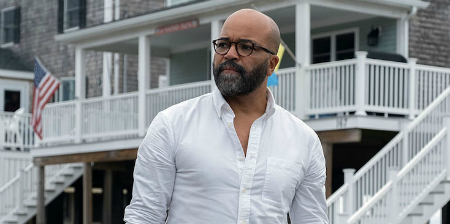
5. AMERICAN FICTION
Jeffrey Wright has long been one of our greatest actors, but we're usually only seeing him in supporting roles. He thankfully moved into a leading role in one of the best written and most intelligent films of the year with this remarkable debut film from director Cord Jefferson.
Wright stars as Thelonious "Monk" Ellison, an English professor and struggling novelist. Monk prides himself on writing novels that challenge the reader and has become deeply bothered by how the industry repeatedly continues to sell, push, and cash in on cliched and offensive Black narratives. One evening, as a joke, Monk decides to write a book that plays up all of the black narratives and stereotypes he despises. So, under the pen name Stagg R. Lee, Monk sends the book to his agent. To Monk's surprise, the agent loves it, and the book quickly becomes something everyone in town wants to buy.
I have always been a big fan of satire, but good satire is hard to find nowadays. "American Fiction" is so sharply-written and such an intelligent satire that isn't afraid of poking fun at Hollywood and the entire media industry for trying to cash in things like slavery and police brutality while continuing to keep negative stereotypes alive. Cord Jefferson's screenplay asks tough questions and isn't afraid to make the audience think.
Certain scenes, particularly the ones between Monk and Sintara Golden (Issa Rae), offer a lot of food for thought and showcase how two people of the same skin color can see things from a totally different perspective. The overall theme in the film concerns bias and prejudice and how they impact Black artists, including writers, directors, and actors. The film never gives the audience answers, but it consistently brings up the Black experience and how it is seen through various lenses, including the media.
Jeffrey Wright is at the absolute top of his game in this film. The character of Monk is so pretentious and entitled, but you can't help but fall in love with the guy. He's incredibly smart and wants to see stories being told from his experience as a Black man. With so many movies and television shows targeting marginalized voices and communities, it is interesting to see a character like Monk, a sophisticated black man, fighting the system in hopes of seeing a person like himself in a book or on the big screen. Wright embodies Monk while also evolving as a person throughout the film. It is quite the performance and is truly one of the best of the year. Sterling K. Brown is also extraordinary as Monk's brother, lending the film's family scenes a truly wonderful combination of drama and humor.
The film's ending is powerful and dives into the whole idea of who Monk is today vs. who he was at the beginning of the film. The end is very funny, but it makes you wonder whether Monk sold out and somehow becomes everything he hates.
In no way a showy film, it powerfully demonstrates that minimalistic direction is all you need when you have a near-perfect script and a brilliant cast to bring the story and its characters to life. It's the kind of film that once you see it, you wish that Hollywood could produce a whole lot more of.
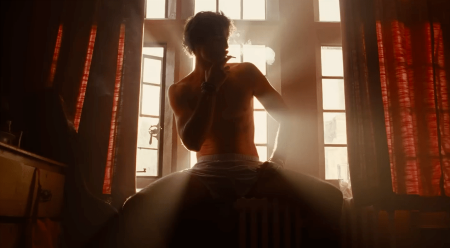
6. SALTBURN
I think probably everyone that has seen this movie had this thought multiple times as they watched it .. "what in the hell am I watching?" I know I certainly did throughout, but by the end, I realized I had watched something so thoroughly original and exciting and knew I had seen one of the very best films of the year.
While "Saltburn" does have some familiar framework to other classic tales of obsession and deception, director Emerald Fennell's love of bad fashion, banger songs, and the messy area where attraction meets repulsion offers audiences a thrill ride that is uniquely harrowing, hilarious, and exhilarating. Plus, "Saltburn" is a thriller that edges confidently into self-aware comedy. Not an easy feat at all to pull off.
Barry Keoghan gives one of his greatest performances yet as Oliver Quick, a "scholarship case" attending Oxford University in 2006. While relentless hard work got him there, their spots were secured by legacy, family names, and heaps of donations.
We quickly learn that Oliver deeply desires to be with the hot but dopey Felix Catton (Jacob Elordi). Class conflicts aside, "Ollie" and Felix become fast friends, and as summer approaches, the latter invites his poor friend to join him at the family's ridiculously huge estate which is called Saltburn.
The film's gothic framework involves a grown Oliver looking back on this summer, warning his audience that people misunderstood his feelings for Felix. Throughout the film, this ominous voiceover will arise, giving some added color - or shadow - while reminding us that all of this is coming from the unreliable narration of a character as enigmatic as he is mesmerizing. Oliver becomes a figurative shapeshifter at the Catton home, bending his persona to best appease whoever is his audience: the project, the crush, the student, the co-conspirator. But to what end?
While the first act on the Oxford campus is filled with comedy of the social embarrassment variety, the second act at Saltburn itself is absolutely on fire with its scorching satire of the so-called elite. Rosamund Pike gives her funniest performance yet as mother Elspeth. With a wide smile and breezy tone, Pike welcomes audiences into Saltburn, then swiftly stings with a series of increasingly outrageous confessions, to which Oliver - and us - are eager audience. She is absolutely electrifying in her cruelty. The entire cast of characters at Saltburn are all beautifully written and there's not a bad performance among them ... this is truly one of the best ensemble performances of the year.
While Oliver is "Saltburn"'s narrator and protagonist, he is nonetheless a slippery figure. Keoghan's penetrating gaze focuses on Felix, and it's hard to gauge if what Oliver is feeling is love, lust, jealousy, hatred, or a mix of all this and more. The role of Oliver is made up of masks, and Keoghan wears each one so convincingly that it's an enthralling game to guess which is real.
Oliver talks a good game no matter who he's talking to, but Keoghan and Fennell know the truth of him lies in his actions. Sex is not some lofty allusion in "Saltburn". Love scenes - or lust scenes, anyway - play out with a visceral relish. Fennell refuses glossy displays of flesh, instead reveling in sweat, spit, semen, and menstrual blood. I didn't think it was possible to find new ways to shock an audience, but trust me, this film finds many. Yet Fennell doesn't project judgment onto any of these scenes, as it is tied deeply to Oliver's point of view, and he is definitely not ashamed. Keoghan expresses that in the confidence of his physicality in these sex scenes and beyond, to an ending that is kinetic, fun, and over-the-top. Not to mention one of the best achievements in cinematography and film scoring this year, this will definitely be a film I will (and honestly can't) ever forget.
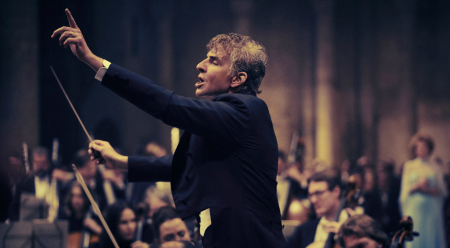
7. MAESTRO
Bradley Cooper has long ago demonstrated what an accomplished and dedicated actor he is, but in recent years, he has steadily shown what a truly accomplished film director he is, and he reaches his pinnacle of directing with this beautiful and unconventional biopic about the legendary composer Leonard Bernstein. In a step up in terms of ambition and bravura, Cooper directs with a gusto and showmanship to match that of Bernstein at his most fevered and ecstatic, a wonderful example of matching the energy and style of a film that matches its central character.
With its nonlinear structure, "Maestro" feels a little like a scrapbook of life moments - glittering career achievements; crackling explosions of domestic tension - and Cooper keeps up a wonderful kinetic energy throughout. It's another way in which Bernstein's restless essence is captured in the storytelling. For the most part, though, the film is all about the conflicting dualities at the heart of this complicated man, which Cooper smartly reflects in the contrast between black-and-white segments and the rich, saturated color scenes; in the tight, boxy aspect ratio of the early scenes compared with the wide-open opportunities of later life; and in the framing that places Leonard and his wife Felicia together in the same room but also worlds apart.
The most obvious example of duality in Bernstein is his sexuality. There's no question that he loves his wife (played by Carey Mulligan in a career-best performance). The fact is emphasized from the outset, with one of the film's first scenes showing a widowed Bernstein opening his heart in a television interview and expressing his grief over her death. But he also desires and openly pursues a long list of young men, key among them a particularly close and poignant early connection with clarinet player David Oppenheim (Matt Bomer).
One striking and lyrical moment - a shot that lasts for a while - taps into the complexity of their relationship. Husband and wife are superimposed together in the same frame. Leonard's figure dominates, presented as a huge, dark silhouette. The much smaller shape of Felicia, diamond-bright in her white cocktail dress, glows like a star in the center of the frame. One reading of this image would be that Felicia exists in her husband's shadow. Equally, it could be argued that the shot tells us that she is the light that guides him, drawing him away from his darker, self-destructive impulses.
But then perhaps the great love of Leonard Bernstein is the music. Cooper blurs the lines between home life and the stage through a slick editing technique. A scene showing rehearsals for the ballet that would become the movie "On the Town" unfolds into a fantasy sequence in which Leonard and Felicia dance together. The most powerful use of music, though, is an incredible extended sequence in which Bernstein conducts Gustav Mahler's Symphony No 2 with a dedication that is exultant. It's as though he is touched by God. Cooper prepared for SIX years just to compose that six minute sequence, which truly was one of the most emotional and stunning film sequences of all of 2023. Leonard catches sight of Felicia as he conducts the piece, and even though she is all but estranged from him at this point, she is absolutely transfixed by his passion, and the differences between them fall away. The music, for both, is everything.
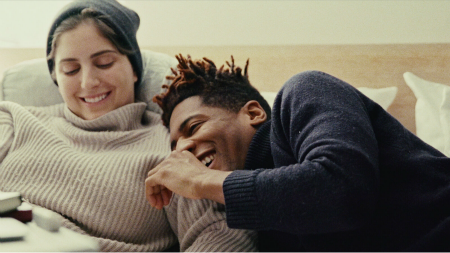
8. AMERICAN SYMPHONY
Matthew Heineman is truly one of our best documentary filmmakers, especially with last year's "Retrograde", which was my second best film of the year. This year, he changed subjects considerably and still made for me the best documentary of the year. Heineman and his cameras settle in this time with musician Jon Batiste as he prepares for the Carnegie Hall debut of a major composition that mixes a classical orchestra with jazz, folk, blues, gospel, and Native American music. Where Heineman's earlier films were about violence, conflict and death, his new one deals with the creation of art.
There's more to it than that, of course. "American Symphony" is about the creation of art in the face of pressure, tragedy and heartbreak, and about the tension between the glory of creation and the pain of living. It manages to capture the glory but it never ignores the price, because when Batiste was preparing for his Carnegie Hall debut, his longtime partner and soon-to-be wife, writer Suleika Jaouad, had to undergo a second bone marrow transplant to treat the acute myeloid leukemia she'd first been diagnosed with a decade earlier. She returned to the hospital to fight for her life; meanwhile, Batiste, a New Orleans-born musician, Juilliard graduate, and former "Late Show With Stephen Colbert" bandleader, was preparing his most ambitious work, one designed to answer his question, "if a symphony orchestra was created in 2022, what would it be?"
"American Symphony" is less a delicate balancing act than a film that embraces personal and professional whiplash; it jumps beautifully between uplift and heartbreak, between career pressures and personal ones. One particularly brutal juxtaposition: The day that Grammy nominations were announced in 2021, with Batiste leading all musicians with 11 noms, was also the first day that Jaouad began chemotherapy for the recurrence of her cancer.
The film takes those tough contrasts and runs with them: One moment we're in the hospital, the next in a spacious rehearsal room with dozens of musicians. Batiste helps Jaouad navigate institutional halls with her rack of IVs one moment, then heads out on the road to do some shows the next. He performs exuberant concerts in front of delighted fans, goes back to the hotel gets on the phone to hear Jaouad talk about how her bed filled with blood earlier that day.
For the most part, Heineman sticks with verite footage, some of it seemingly shot just inches away from his subjects' faces. But even from across the room, it can be shockingly intimate, from footage of their home wedding to Batiste shaving Jaouad's head to him on the phone with his therapist to moments in the hospital where Jaouad is, in her own words, "in survival mode."
The film's homestretch takes us to Carnegie Hall, with Jaouad in attendance in what she says is her first time out of the house or hospital in more than a year. The musicians weather a brief onstage power outage, with Batiste delivering an unamplified piano solo that becomes a summation of his and his wife's entire journey. And then the power comes back on, the classical virtuosos and jazz cats and Native American drummers and soulful vocalists step up and the ensemble comes together on a work that, in the truncated form that we see on screen, seems to be both a truly American symphony and a portrait of one particular American life.
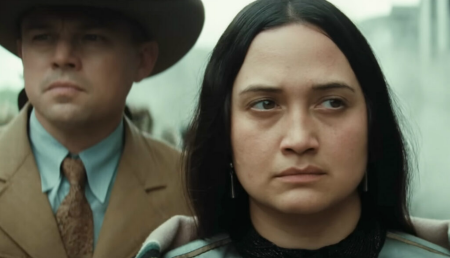
9. KILLERS OF THE FLOWER MOON
I've long agreed that Martin Scorsese is our greatest living film director. His movies have been landmarks in the history of cinema, and many top my list of the greatest movies ever made. As such, he sets an incredibly high standard for himself. On that level of comparison, "Killers of the Flower Moon" is not one of Scorsese's better movies, but it says a lot about contemporary cinema that even his lesser achievements are still better than most movies today, and that's why it ranks ninth in comparison with other films this year.
Just because it's not as great as other Scorsese films doesn't mean that it's not an exceptional achievement, because it is. The story is centered on the Osage Nation, in Oklahoma, in the late nineteen-tens through the mid-twenties. The Osage had struck oil on their land and had become rich, but the entire civic order of the area-business, politics, social life, law and its enforcement-was organized to pry the money away from the Osage and get it into the pockets of whites. On a grand historical scale, "Killers" brings to light a horrific and shameful episode far too long hidden from view in mainstream, white-centric American culture.
Like other films by Scorsese, it is also a gangster movie that dramatizes the spread of corruption at a personal level, like a virus, from criminal kingpins to more or less everyone in their purview. It's also, crucially, a marriage story, and this element shifts the movie's perspective in a huge way-transforming a tale of collective and individual crime into a vision of love that is mysterious, almost religious, and ultimately terrifying.
One performance after another is exceptional, with Leonardo DiCaprio playing his most pathetic character ever, Robert De Niro at his most chilling, but it is Lily Gladstone who is the true heart of the film and who you remember the most for representing such horrible pain of everything that happened. "Killers" moves at a breathless pace, marked by sudden turns of events, evoking the web of evil into which DiCaprio's Ernest is quickly, if imperceptibly, drawn. Scorsese intently observes the manner with which De Niro's King turns Ernest from outsider to insider, which is accomplished in the insidious span of a single welcoming conversation. The rapidity with which Ernest, without a glimmer or a flicker of self-awareness, is drawn into petty crime and then into murderous schemes, suggests an existential vortex of normalized depredation. As the schemes become ever more brazen and complex, and as the pool of victims widens and deepens, Scorsese looks on, with horrified astonishment, at this microcosmic display of the American way of life -- at what the ruthless dare if they are sure of getting away with it.
The character psychology of "Killers of the Flower Moon" is minimal-because Scorsese instead presses its action furiously, urgently, onto the screen as if it were something like a dramatized documentary in the first person, his own bearing of witness.
Scorsese presents the marriage story, the story of love, as an absolute-something that is set apart from cultural, historical, and political particulars and that has the supreme power of religious faith. It is a commitment that extends even to extremes of self-sacrifice, and that resounds with a fearsome silent thunder when that faith is renounced. The scene of that break is among the most devastating in Scorsese's career. It's all the more spectacular for its restrained, even introverted simplicity, and for what follows-a scene of self-conscious irony regarding Scorsese's own uneasy position of telling such a story, of bearing such witness, in such an inappropriately carnival setting as the American entertainment business. Scorsese gives himself a notable cameo, and the last word-compelled to speak, compelled to bring history to light, at whatever spiritual risk of his own.
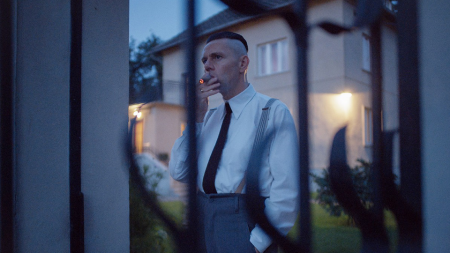
10. THE ZONE OF INTEREST
One of the most horrifying films of recent times was also one of the absolute greatest films of this year, one of the films that reminds you that what you hear and don't see is so much more horrifying than what you can visualize.
"The Zone of Interest" is based on Martin Amis' novel of the same name, but many of its similarities end there as the director Jonathan Glazer instead focuses on Rudolf Hoss, the longestserving commandant of Auschwitz during World War II.
Hoss and his family live next to the concentration camp, their idyllic garden bordered by concrete walls laced with barbed wire. The contrast is striking, but it's one that most of the film's characters ignore - they focus on the smell of flowers in the garden instead of the stench of smoke billowing from chimneys or the sound of their children's laughter rather than the screams and barking orders from soldiers and the people they are torturing.
To capture Hoss's family life, Glazer recreated their actual home, and, using archival testimonies, he was able to piece together what their life looked like during the time they lived outside the camp. The director also placed static cameras around the set, allowing the actors, including Christian Friedel as Hoss and Sandra Huller as his wife Hedwig, to roam freely. It gives the film a voyeuristic feeling compounded by the fear that violence could break into the frame at any moment. That mounting dread, though, comes from what isn't shown, rather than what is. These small moments - the casual acknowledgment of the unspeakable horrors committed by the Nazis, brushed off with casual cruelty - are as breathtaking as the moments that hint at the violence happening all around the family.
The film is, in essence, all about contrasts. The colors of the Hoss' home life - grays, greens, blues - are muted against billowing flames coming from the crematorium or the bright red flower as its color consumes the screen. Glazer even takes this contrast further, using a detour outside the Hoss family's home life to follow a girl shot in the photo-negative as she traverses the grounds outside Auschwitz.
What's most stunning of all, though, is how Glazer reaches into the future to show today's custodians of Auschwitz. It's an astonishing moment in a movie that by this point has already announced itself as a bone-chilling masterpiece. It's one of the most unsettling movies you'll ever see about the banality around evil but also one of the most stunningly relevant, and a film I'll never be able to get out of my mind.
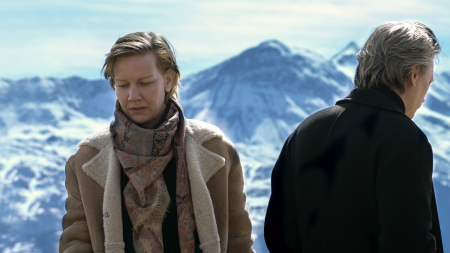
11. ANATOMY OF A FALL
To fully understand a marriage, you need to be a part of it. And even then, it can seem as if the two partners are communicating in entirely different languages. This is literally the case in the marriage of successful German-born author Sandra (played brilliantly by Sandra Huller) and her French husband, aspiring writer Samuel (Samuel Theis), a union that is examined in excruciating detail in Justine Triet's gripping courtroom drama.
Perhaps more than most genres, the courtroom drama succeeds or fails on the strength of its screenplay. And here, with its layered and rewardingly intricate script co-written by Triet and her husband, Arthur Harari, this solid, unshowy film excels. Nodding to some great courtroom dramas of the past, it's a slippery thing, a teasingly complex framework that repeatedly tips the audience off balance and taps into our biases and assumptions. A genre that can sometimes be stuffy and just talk heavy, the courtroom drama here is electric, restlessly dynamic and compulsively watchable.
The reports we get of Sandra and Samuel's life together (there is only one flashback in the film; most of what we learn comes from the evidence presented in the court) suggest a relationship that gets chillier by the minute. But then the prosecution's case relies on cherrypicking the trauma and the deep-seated unhappiness in the marriage, and foregrounding the character traits in Sandra that might make her capable of murder. A choice of other, sunnier moments, as Sandra reasonably points out, would paint an entirely different picture of her relationship with her husband.
Did she do it? It's worth mentioning that when Huller asked the director this question, Triet refused to say, claiming that she herself didn't know the answer. Ultimately, one of the key pleasures of the picture is its uncertainty - the niggling doubts that remain, and the sense that a crucial piece of the puzzle is tantalisingly out of reach.
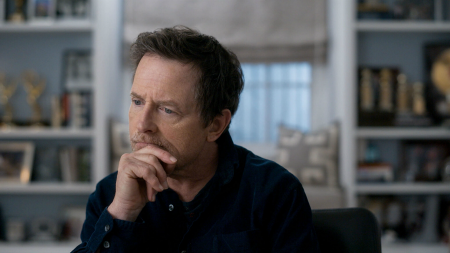
12. STILL: A MICHAEL J. FOX MOVIE
"I'm not pathetic," declares actor turned activist Michael J Fox early on in this intimate, uplifting, and frequently very funny documentary about his life. "I've got shit going on. I'm a tough son of a bitch." On the evidence presented here - a wonderful collage of interviews, dramatizations, perfectly chosen film and TV clips, family footage and narrated biography - it's hard to disagree.
Having achieved stardom in his early 20s, Fox found himself in his 30s hiding from, and then publicly facing up to, a diagnosis of Parkinson's disease - a condition that he believed only affected older people. As he says with genuine surprise: "I was not someone who was supposed to get this." Yet as we learn from this incredibly defiant portrait by Davis Guggenheim, "Some people would view the news of my disease as an ending, but I was starting to sense that it was really a beginning."
Fox was diagnosed with Parkinson's when he was 29 but he and his family kept it a secret for several years; one of the more fascinating segments is the compilation of scenes from his hit show "Spin City" and films in which he holds objects in his left hand, to mask uncontrollable tremors. He has become a vocal and tireless advocate for fundraising and research. The disease actually forced him to focus on his life and his family, he says. His wife Tracy Pollan basically saved his life, in Fox's telling. We see them at home with their adult children, laughing. They don't treat him with pity or with any particular accommodations, Fox says. And he would't want them to.
All of this is interesting, but watching and listening to Fox talk is magnetic. Guggenheim notes that for all of the hours he's spoken with him, Fox has never said that he is in pain. Fox looks briefly incredulous, shrugs, laughs a little and says, "I'm in pain!" It's the perfect response, perfectly delivered. Through it all, Fox has never stopped being a star.
The real revelations, however, lie in the depiction of Fox's family life, most notably his marriage to Pollan, who first won his heart by calling him "a complete fucking asshole", and whose unswerving love leaves him all but speechless when he's asked what she means to him, save for one word: "Clarity". Ironically, while the symptoms of Parkinson's may create the impression that Fox is never at rest, his relationship with Pollan and their children seems to have finally granted him the stillness he never had.
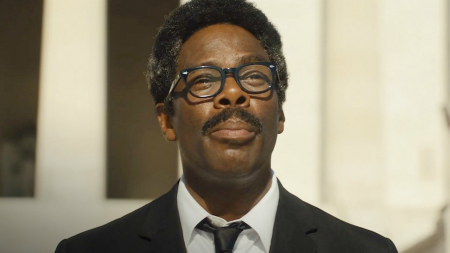
13. RUSTIN
While most students in the U.S. were of course educated about Martin Luther King Jr., Malcolm X, Rosa Parks, etc., just as many students were not given the opportunity to learn about Bayard Rustin, a gay Civil Rights hero who helped usher in a lot of change to 1960s America. Played by Colman Domingo, an actor finally receiving his leading man due, Rustin is a tireless activist, fighting alongside his close friend Martin Luther King Jr (played wonderfully by Aml Ameen). But childish rumors about their relationship, started and maintained by their peers, led to public controversy and a rift in their friendship.
Hurt by what he sees as a betrayal by his friend but still plagued by the grim cycle of anti-Black violence of the time, Rustin wanted to make a statement, with or without King's help, and decided to plan a march, uniting those from across the country who were as tired as he was, descending on the Capitol in their thousands. The film follows his dogged journey to make it happen, in the space of mere weeks, as others within the movement continue to undermine him.
While the film stays true to that of a pretty standard biopic, it's the performances that truly elevate the film. In addition, it's when the script leans into the story's specificities that the film is at its most compelling - when intersectionality causes ruptures within the group, when we see civil rights giants fail to understand the hypocrisy of their homophobic bigotry, how Rustin manages being gay in public and in private - and these moments help to provide depth to some of the more standard-issue scenes. Even when the film is playing it as safe as can be, the bare bones of the story are so undeniably impressive that it's hard not to feel moved by what was achieved, a feeling that's also largely down to Colman Domingo's towering performance. He nails the charming persuasiveness that would explain how Rustin achieved so much in such a short amount of time and as he slowly starts to experience a level of acceptance for his whole self, rather than handpicked parts, there's a genuine poignancy to watching him crumble in front of us, a weight we can feel being lifted away.
While the scale of the big finale is hampered by budgetary constraints, it's an effectively stirring endnote regardless, even if it might be Domingo's hand holding up the entire film. Sometimes a performance can truly be that good.
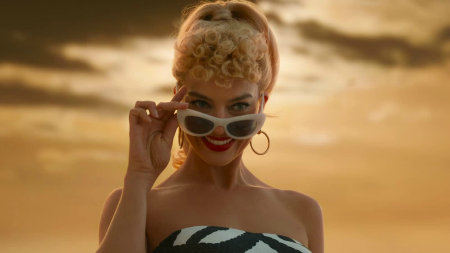
14. BARBIE
"Barbie" was a surprisingly profound film, more philosophical and existential than I initially expected from a franchise rooted in plastic fashion dolls that became a cultural icon in the late 1950s. But I should have known that the uniquely original and insanely talented Greta Gerwig would definitely deliver something special.
What Baumbach and Gerwig's script does well is give characters an ultra-awareness of their surroundings. Barbie recognizes its own surreal existence: a world where perfect plastic figures wrestle with humanistic imperfections. It acknowledges that change, even when challenging, is necessary and that perfection is an unrealistic and even undesirable goal. Issues of feminism and patriarchy are serious topics, but the writing duo managed to state their values with the right amount of levity and camp so that it doesn't distract from the film's message - which is all about finding yourself and finding balance.
Margot Robbie, in the title role, is as remarkable as ever. Her commitment to her roles is well known, and Barbie is no exception. She imbues her character with a depth and complexity that elevates Barbie beyond the plastic persona associated with the doll. Robbie is backed by an equally talented cast including Ryan Gosling - who was the absolute perfect choice to play Ken - Kate McKinnon, America Ferrera, Michael Cera, Simu Liu, Will Ferrell, Emma Mackey, Issa Rae, Hari Nef, Ncuti Gatwa, Alexandra Shipp and others, all of whom deliver compelling performances. Ferrara in particular is a revelation here, and delivers one of the best monologues of recent times about the universal struggles that every woman has to go through every day.
Sarah Greenwood's meticulous production design, Jacqueline Durran's vibrant costumes, and the artistry of the makeup department truly shine. Each set is thoughtfully designed and each costume purposefully tailored, creating an aesthetic as plastic-perfect as the doll itself. Their work is the backbone of the movie, emphasizing that the magic of "Barbie" doesn't just lie in the script or the performances but also in this campy, illuminated world created by these talented artists.
In essence, "Barbie" is a film that challenges the viewer to reconsider their understanding of societal norms and expectations. While it may be centered on a plastic doll, it is very much a film about the human condition - our strengths and our flaws. It is a reminder that even within the most superficial elements of our culture, there can exist an unexpected depth and an invitation to discourse. Gerwig's directing is an earnest exploration of identity, societal structures, and the courage to embrace change - proving once again that stories can come from the most unusual places.
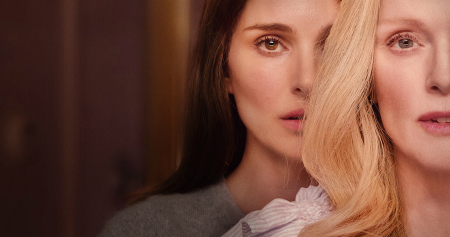
15. MAY DECEMBER
Director Todd Haynes, who I don't think is capable of making a bad movie, outdoes himself with this one, the product of debut screenwriter Samy Burch's twisted take on the Mary Kay Letourneau story. "May December" is not a complete retelling of that saga. It instead takes inspiration from it to create something truly unique. Natalie Portman stars as Elizabeth, an actress eager to do character research for her upcoming role as Gracie Atherton-Yoo, a woman infamous for, two decades ago, having had a relationship with a 13-year-old at the pet shop where she worked. To prepare for the role, Elizabeth heads to Georgia, where Gracie (Julianne Moore) and her now-grown husband Joe (Charles Melton) have agreed to let her into their lives. The couple is a complex one, and while Gracie can't help but be defensive around the new arrival, Joe struggles to answer many of the questions being posed to him.
This is not a movie with particularly redeemable characters, but that's by design. Portman's performance switches from innocent curiosity to invasiveness in a split second, her character going to increasingly strange lengths to truly get inside the head of a woman who slept with a seventh grader. Moore, for her part, plays the victim marvelously, a sad, mercurial woman who thinks her reputation from people is unjustified and cruel. The writing is sharp, Moore's performance is perfect, and the small world of the Atherton-Yoo family is fascinating.
While Portman and Moore operate on a more melodramatic level, it is Charles Melton who undertakes one of the film's biggest challenges. Joe is now 36, the same age as Portman's Elizabeth, and the immensity of the decisions he made when he was too young to do so are beginning to hit him. It is fascinating and heartbreaking to watch his facade breaking down.
"May December" is not for people who aren't willing to engage in works about awful people. The film is daring in its subject matter and its characters, and the actors bring just as much of a deft, disagreeable touch. It is a deeply messed up movie, and it's all the better for it.
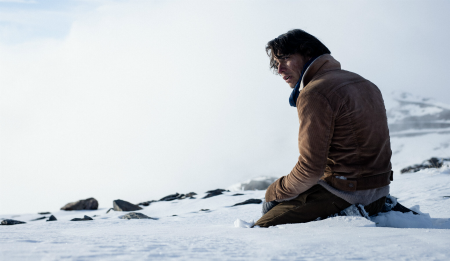
16. SOCIETY OF THE SNOW
On October 13, 1972, a plane carrying an Uruguayan rugby team crashed high in the snow-covered Andes Mountains. Many among the 40 passengers and five crew members were killed instantly. After surviving 72 days, 16 survivors were rescued.
This unbelievable true story of that ill-fated flight has been on the screen several times before, but this remarkable film from director and co-writer J. A. Bayona is the latest and arguably the best. This film expands a bit further beyond the survival element of the story and uses its own thoughtful framing device to offer a fresh and unique perspective that honors both the living and the dead.
Adapted from journalist Pablo Vierci's 2009 book of the same name, "Society of the Snow" pulls no punches with Bayona's focus on realism. His film is uncomfortably yet respectfully authentic, staying true to every horrific detail without ever being sensational or lurid. It makes for a viscerally immersive survival saga. But just as potent as the sensory experience is the simple yet profound message at its core - one about the indomitable human spirit as seen through the steadfast will to live and the sacrifice for those you hold dear.
The depiction of the plane crash itself is brief but intense and not for the faint of heart. It's a terrifying sequence as the Fairchild FH-227D strikes a mountain, losing both wings and the tail section, and sucking out several helpless passengers. What's left of the fuselage barrels down an icy mountain at over 200 mph. What follows is a harrowing story of survival that's as unsettling as it is inspirational. We watch as those who lived through the crash suffer through even more perilous situations - intense sub-zero cold, no food, and the mounting deaths of their friends and family. As days pass hopelessness sets in, leading the weakened and starving group to make a desperate choice. With the inevitability of death lingering, they painfully decide to eat from the dead bodies. It's a heart-rending turn handled with great empathy. Bayona stays focused on the humanity, showing the group laboring over their options, weighing the spiritual consequences, and bearing the psychological toll.
There are so many crucial ingredients in this film (from the gorgeous cinematography to the sound design, to the musical score, and most importantly to the incredible performances) and Bayona uses them to craft what could be considered the definitive telling of this unimaginable true story. And even if you know the real account, "Society of the Snow" will still leave you astonished by the sheer tenacity of the filmmaking and the passion in its storytelling.
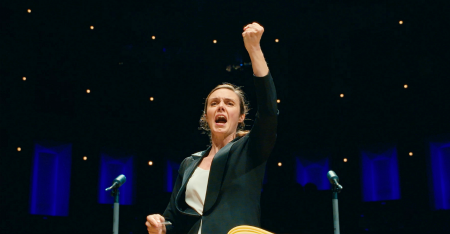
17. MAESTRA
Not to be confused with the higher profile film "Maestro" which was also released in 2023, this film was a documentary following five women from around the world as they compete in the only all-women competition for conductors. The film explores the various factors that shaped the group into who they are and the obstacles they continue to face.
The La Maestra event was founded to help female conductors get noticed in what is still a very male dominated profession. Filmmaker Maggie Contreras allows time to get to know each of the participants and what they are dealing with. One of the women worries about how having children may negatively impact her future while another tries to prepare while taking care of her kids. Along with questions about family, the film deals with an even darker issues surrounding sexism and abuse. As dark as things get, it never loses the audience. For all the tragedy, it is the triumphs and the incredible talent of each of these women that leave the strongest impression. It is a powerful film that manages to be ultra-focused while addressing so many important issues.
There's an old saying that the true measure of someone's character isn't just by how someone achieves victories or accomplishments but also by how someone handles failures and defeats. "Maestra" is an example of how a high-profile competition such as La Maestra, while certainly important in the classical music world, should not fully define someone's career. It should be a "win" to even be part of this highly selective competition. And how the contestants handle the results of this competition are largely indicators of how they handle challenges in life.
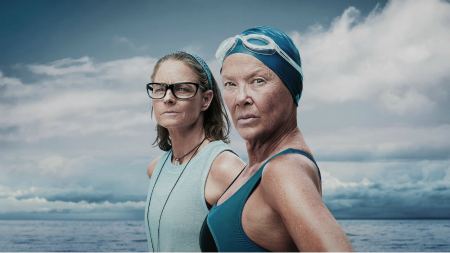
18. NYAD
One of the most uplifting films of the year was this wonderful true story of tenacity, friendship, grit, and drive that catapulted marathon swimmer Diana Nyad to fame as the first person to make the 110-mile, 62-hour non-stop trip from Cuba to Florida in shark-infested waters without a shark tank. Under ordinary filmmakers, it might be an extraordinary sports saga about an extraordinary woman beating overwhelming odds, but carefully and meticulously chronicled in their feature narrative debut by documentarians Elizabeth Chai Vasarhelyi and her husband Jimmy Chin, it combines archival material with the powerful passion and obsession of a woman who did not know the definition of the word "failure"-a story that resonates long after the final frame, served and by the two exceptional performances of Annette Bening as Nyad and Jodie Foster as her coach, best friend and one-time lover, Bonnie Stoll. The result of so much loyalty to the subject matter is a movie of uncommon exhilaration.
Jodie Foster balances the force of Annette Bening's exploding charisma with a winning mixture of tough resilience and understated sensitivity, while Annette Bening admirably avoids every attempt to make Diana Nyad into a lovable cliche of Hollywood heroism. Bossy, selfish, often insensitive to the needs of others, with a huge ego fueled by pride, she's so real and so complex that you love her, flaws and all. She does all of her own swimming, spending 90 percent of the film soaking wet. Stripped of their natural beauty, all weathered lines and sun-bleached wrinkles, the film is so physically challenging and emotionally draining, it was amazing how natural and real this film felt, all the way through. "Nyad" doesn't offer much in the way of surprises, especially if you're familiar with the real history, but each of Diana's numerous attempts to cross the Florida Straits is filmed with the right amount of tension and peril, with setbacks along the way including sharks, jellyfish, inclement weather, and worse. Each swim follows its own little mini-arc, with the film finding a natural ebb and flow before its inevitable jubilant end.
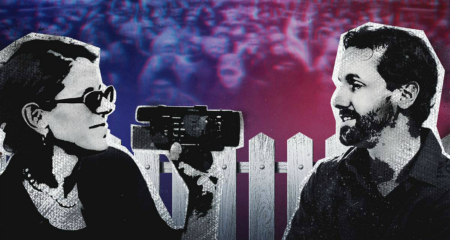
19. THE INSURRECTIONIST NEXT DOOR
Alexandra Pelosi has long been one of my most favorite documentary filmmakers. Her films are never overly flashy or innovating in documentary style, but they are always hugely entertaining and most importantly, they shine much needed insight into political subjects and issues that all sides need to truly listen to. She seeks to humanize that which we can so easily vilify, at least in some attempt to try to understand. That seems ever more impossible in our starkly divided time, but if the daughter of Nancy Pelosi can actually seek out to interview insurrectionists who stormed the Capitol on January 6, 2021 wanting to find and possibly hurt her mother, then maybe we can take some time to listen and at least see why they believe the way they believe.
Pelosi's 75-minute documentary features interviews with people who were charged with crimes for participating in the Jan. 6, 2021 attacks on the U.S. Capitol. She is doing what smart journalists strive to accomplish: She is taking the facts and explaining what happened, giving the news context and applying keen analysis to help us understand what happened on that grim day of Jan. 6, 2021. Further, the implication that Nancy's Daughter is so filled with liberal passion that she is going to take cheap shots against the insurrectionists is inaccurate.
These folks ruin their reputations in the film with their own words on camera. Pelosi does not push her liberal point of view on them or try to make them look ridiculous with clever editing. Pelosi's only agenda is to try to understand what happened. She shows us that each insurrectionist has a face and a story. As it turns out, we can deduce that the only thing that unites all of the insurrectionists is that each of them believed the 2020 election was stolen from Donald Trump. That is the key takeaway.
Pelosi is a master storyteller. She helps us understand the back story of each subject in the film. Their stories reek of pitiful political naivete. They came from broken homes, suffered from drug abuse, were reeling from unemployment, lacked formal education and didn't comprehend what they were getting into.
Pelosi took pains to show her subjects as multi-dimensional people. The scene where she interviews a man and his wife of 12 years and their daughter - and gets them to talk about how they met and why they have stayed together - could be the saga of any modern American family. Pelosi makes the point that the insurrectionists should be considered on a person-to-person basis. Lumping them together under one banner - insurrectionists - is as futile as using words to describe a single voting bloc.
A documentary should have a point of view. Alexandra Pelosi's point of view couldn't be clearer, or more important - If we want to understand what happened on January 6, 2021, we must try to understand the people who were there.
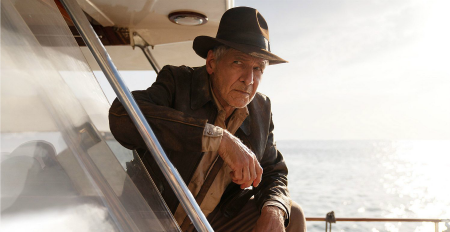
20. INDIANA JONES AND THE DIAL OF DESTINY
The original 1981 "Raiders of the Lost Ark" was not only an enjoyable landmark film growing up as kid, it was the also the film that inspired me to be a film director. As such, I was incredibly disappointed when "Kingdom of the Crystal Skull" looked like it would be the ending film for a series that has truly been one of the best in cinema history. Thankfully, Indiana Jones got one final time on screens, and this one did not disappoint.
This installment turns on pieces of a dial created by the Greek mathematician Archimedes, which, like most of the relics that pop up in Indy's universe, may or may not bestow godlike powers. Naturally, the Nazis want it, especially Hitler. So the film opens in 1944, with Indy (a de-aged Ford) fighting Jurgen Voller (Mads Mikkelsen) to nab it while getting out of one of his signature high-octane scrapes via a familiar combo of costume changes, well-aimed punches, acrobatics, and dumb luck. Then we jump forward to 1969, to discover a very much not de-aged Indy collapsed into his armchair in front of the TV, shirtless and in boxers, snoozing and clutching a beer. This is a movie about getting old, after all.
The film features so many of the best Indiana Jones tropes -- old friends and new, tricks and turns, mysteries, maybe some time travel, and the question of whether the magic is real. Phoebe Waller-Bridge is in this movie as Helena Shaw, Jones's archaeologist goddaughter, and injects it with some wonderful new energy.
When "Raiders" first hit the big screen, it was always intended to be the first in a series, much like Lucas and Spielberg's beloved childhood serials. These films endure in part because they're remixes that are alive with imagination and even whimsy, the product so clearly of some guys who wanted to play around with the kinds of stories they loved as children. The film was a reminder of how big budget movies have changed so much these days, and how we don't get the kinds of true original films and risks that we used to get. After 40 years and change, Indiana Jones and the Dial of Destiny releases into a world where there's more stuff than ever to watch, but somehow it feels like we have less choice, less chance of discovery. It is our moment in history - an artifact of what it was to be alive right now. When the historians of the future look back, I have to wonder what they'll see, and thus who, in the end, they'll think we really were.